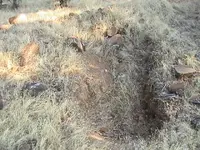nuggeteer
Jr. Member
- Joined
- Jun 7, 2013
- Messages
- 63
- Reaction score
- 134
- Golden Thread
- 0
- Location
- Redding, CA
- Detector(s) used
- Gold Bug Pro
- Primary Interest:
- Other
Hi everyone,
I biked out to a few areas this week for some detecting. Although the temperature has dropped into the low 90's, the sun is still strong enough that if I stop for any longer than a minute or two I swear I can smell my polyester shirt cooking.
The first area was an ancient terrace ridge that had been worked down to the bedrock in some spots. I detected these for a bit but didn't find anything. I followed the ridge to the top where it flattened out and found numerous gouges about the size of small burials. I'm assuming these were the result of a sampling method by the early miners.
The second area was a hillside that had been ground sluiced all over for eluvial gold and there were many prominent ditches. Numerous paths zigzagged throughout the area which made it easy to access, and the worked area was substantial enough that I suspect anyone who owned a detector in this region of Northern California would have found it by now. Quartz and red/brown gravels blanketed the entire landscape except where cuts and run-off exposed the yellow granitic bedrock beneath. There were holes and footprints everywhere, but I did manage to find two pieces. I also found an old "Lucky Lager" beer can... I left this in place.
The third area was a ravine that had grass-covered lumps along the length of it. Likely rocker box tailings, I was tempted to dig into the lumps but decided not to because the area was just too nice to rip apart. On my way out, I spotted a bunch of turkeys running across the road.
The fourth area was a shallow waterway where the banks on either side had been ground sluiced. There were unworked strips between the cuts composed of a cemented red sediment which would eventually harden to conglomerate. These strips are common at such workings, but I never get anything out of them.
The fifth area was one I detect often and it usually gives out a piece or two of gold. When I arrived, it was barely recognizable as some cutting had been done since I last visited. I know there are reasons for cutting and I suppose I should've been excited as it opened up new land for detecting, but when I saw that the large manzanita which I always liked to sit under for shade was cut down I felt a little sad. I detected the spots where the shallow meta-volcanic bedrock dipped under dusty sediments and after an hour I had two pieces. About ten feet uphill I got another signal, and with the first scoop of my plastic shovel I uncovered a third piece of gold, in-situ.
Below: gold country, first area, second area, the beer can, third area, the turkeys, fourth area, fifth area, in-situ, the gold
I biked out to a few areas this week for some detecting. Although the temperature has dropped into the low 90's, the sun is still strong enough that if I stop for any longer than a minute or two I swear I can smell my polyester shirt cooking.
The first area was an ancient terrace ridge that had been worked down to the bedrock in some spots. I detected these for a bit but didn't find anything. I followed the ridge to the top where it flattened out and found numerous gouges about the size of small burials. I'm assuming these were the result of a sampling method by the early miners.
The second area was a hillside that had been ground sluiced all over for eluvial gold and there were many prominent ditches. Numerous paths zigzagged throughout the area which made it easy to access, and the worked area was substantial enough that I suspect anyone who owned a detector in this region of Northern California would have found it by now. Quartz and red/brown gravels blanketed the entire landscape except where cuts and run-off exposed the yellow granitic bedrock beneath. There were holes and footprints everywhere, but I did manage to find two pieces. I also found an old "Lucky Lager" beer can... I left this in place.
The third area was a ravine that had grass-covered lumps along the length of it. Likely rocker box tailings, I was tempted to dig into the lumps but decided not to because the area was just too nice to rip apart. On my way out, I spotted a bunch of turkeys running across the road.
The fourth area was a shallow waterway where the banks on either side had been ground sluiced. There were unworked strips between the cuts composed of a cemented red sediment which would eventually harden to conglomerate. These strips are common at such workings, but I never get anything out of them.
The fifth area was one I detect often and it usually gives out a piece or two of gold. When I arrived, it was barely recognizable as some cutting had been done since I last visited. I know there are reasons for cutting and I suppose I should've been excited as it opened up new land for detecting, but when I saw that the large manzanita which I always liked to sit under for shade was cut down I felt a little sad. I detected the spots where the shallow meta-volcanic bedrock dipped under dusty sediments and after an hour I had two pieces. About ten feet uphill I got another signal, and with the first scoop of my plastic shovel I uncovered a third piece of gold, in-situ.
Below: gold country, first area, second area, the beer can, third area, the turkeys, fourth area, fifth area, in-situ, the gold
Attachments
-
 gold country.webp24.4 KB · Views: 269
gold country.webp24.4 KB · Views: 269 -
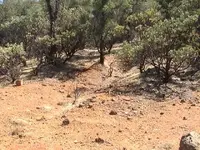 sample hill.webp93.5 KB · Views: 273
sample hill.webp93.5 KB · Views: 273 -
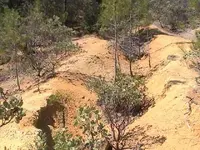 diorite.webp87.2 KB · Views: 259
diorite.webp87.2 KB · Views: 259 -
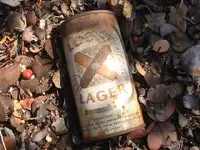 drunk.webp55.9 KB · Views: 250
drunk.webp55.9 KB · Views: 250 -
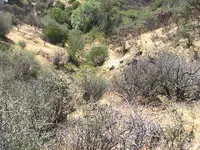 ravine.webp104.3 KB · Views: 242
ravine.webp104.3 KB · Views: 242 -
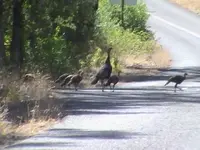 turko.webp39.5 KB · Views: 240
turko.webp39.5 KB · Views: 240 -
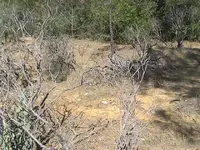 private.webp94.9 KB · Views: 222
private.webp94.9 KB · Views: 222 -
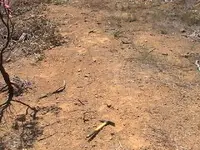 jolly patch.webp96.5 KB · Views: 223
jolly patch.webp96.5 KB · Views: 223 -
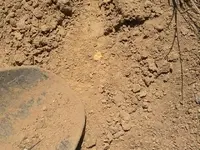 in-situ.webp82.5 KB · Views: 258
in-situ.webp82.5 KB · Views: 258 -
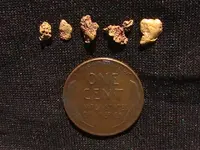 coin gold.webp64.6 KB · Views: 247
coin gold.webp64.6 KB · Views: 247
Last edited:
Upvote
0



